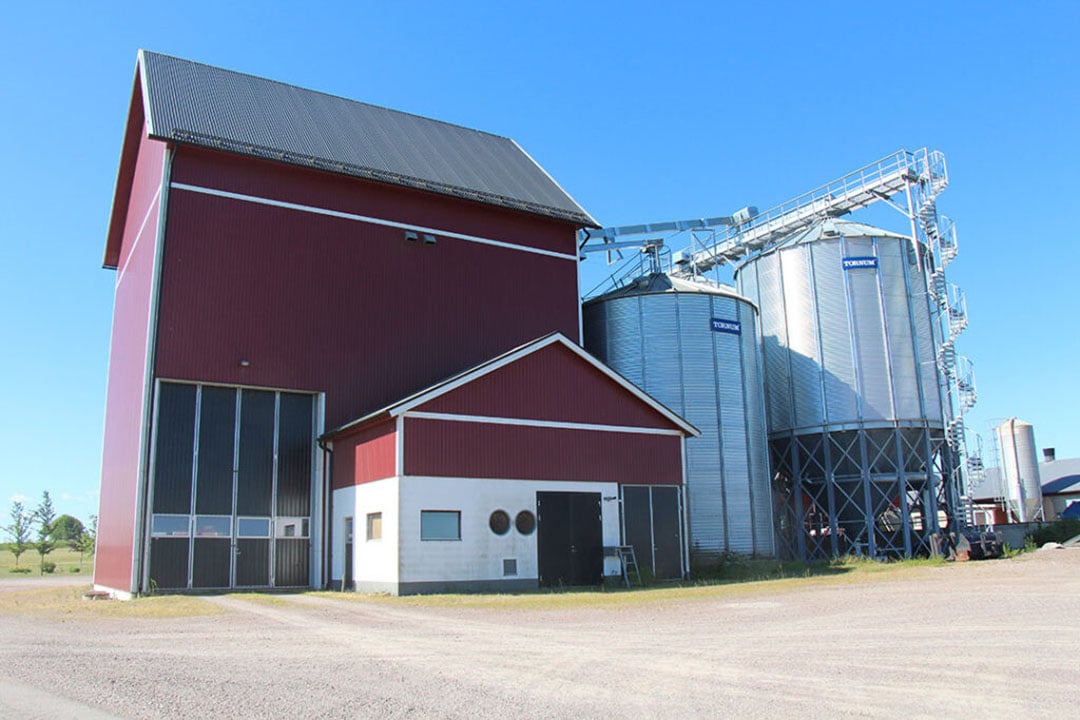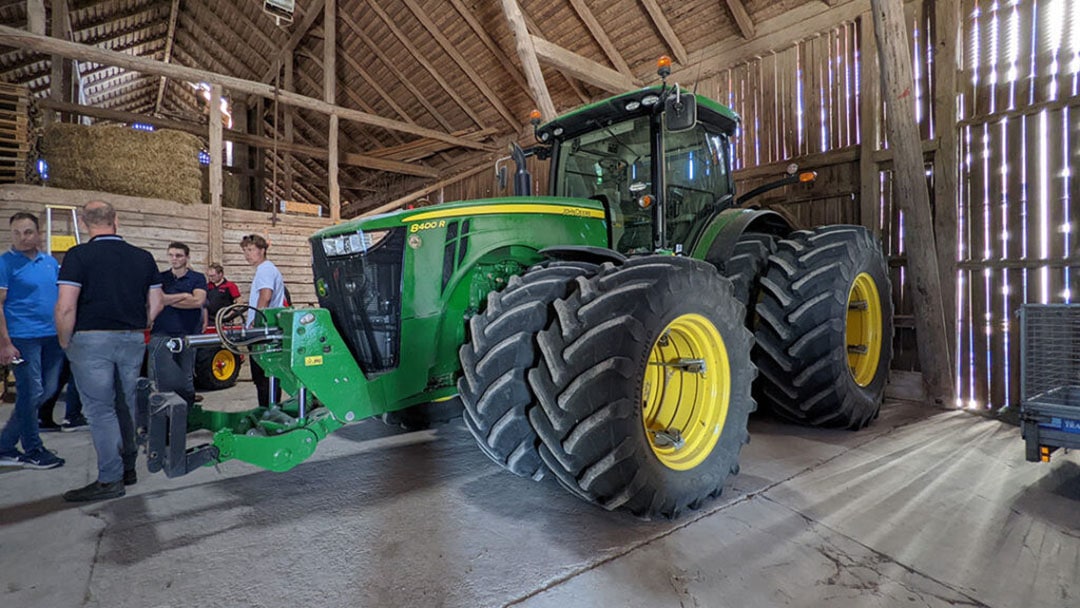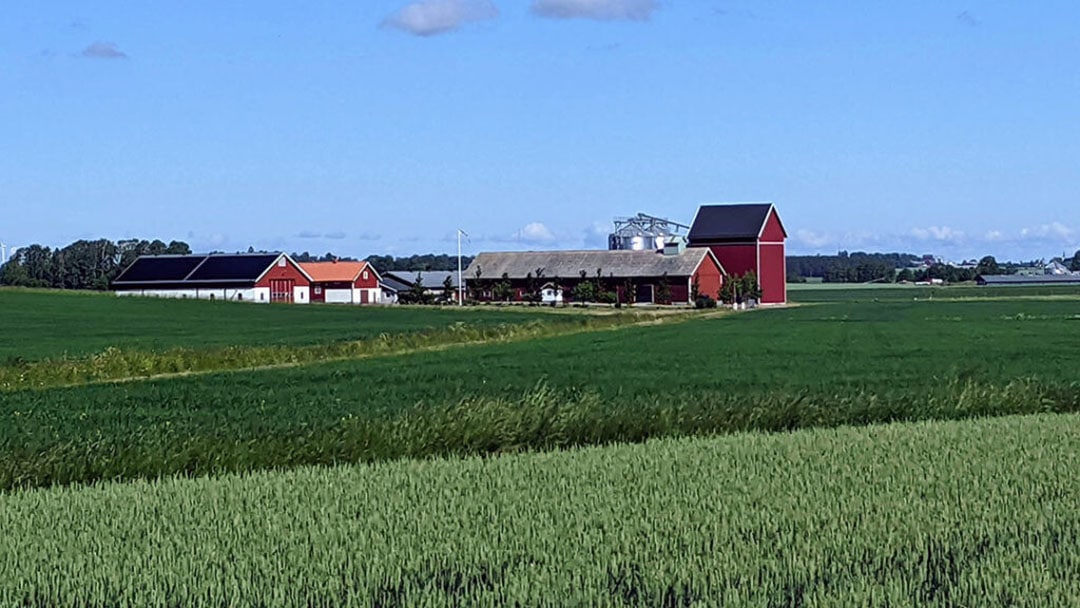Swedish farmers stepping away from organic farming

Gustav and Lennart Samuelson used to have half their acreage in organic production. But next year they’re stepping away from organic farming and switching back to conventional farming due to lack of demand.
While the European Union is urging farmers to step up on organic farming, reality points out otherwise. Hindering regulations, lack of demand and the unwillingness of consumers to pay extra for organically produced food, is causing arable farmers to pause the uptake of organic farming and sometimes to even switch back from organic to conventional farming. Especially this year with roaring prices for fuel and feedstuff.
This concerns several countries such as The Netherlands, Belgium and also Sweden where Gustav Samuelson and his father Lennart until this year used to grow organic crops on half of their 480-ha acreage. They also house 28,000 hens for egg production. It’s these hens that have also played a major role in the decision of the Samuelsons to step away from organic farming in the coming season.
Text continues below image

Small farm in lower village
Their farm is called Nederlösa Lillgård. Nederlösa is the region they’re in with ‘neder’ meaning lower and ‘lösa’ meaning village. Lillgård then translates to small farm because they ‘only’ own 120 ha of arable land. The rest of the acreage, 360 ha, is rented. The average field size is 20 ha.
Until 2022, half of their acreage was farmed conventional and the other half organic. Conventional arable land in the region is currently valued at around €40,000/ha. Rental prices for arable land currently vary between €400 to €600 per hectare and are higher where you can grow specialty crops. The Samuelsons are renting out 18 ha to a potato grower for €1,000 per hectare. There’s not too much potatoes grown in the region because of the soil type, the short growing season and the presence of stones.
Winter wheat main organic farming crop
With 100 ha, winter wheat is their main crop when it comes to the organic farming and crop rotation with alfalfa (25 – 50 ha) followed by oilseed rape (25 – 50 ha), winter wheat, again winter wheat, then peas (25 – 50 ha) and then again winter wheat. Their conventional crop rotation includes 100 to 150 ha winter wheat, barley, oilseed rape, peas or beans and sometimes flax to have a good pre crop before they grow winter wheat for two years in a row again.
There’s currently no limitation or maximum for the use of nitrogen (fertiliser) but the farmers don’t apply too much nowadays because of the extremely high fertiliser prices compared to the yield potential. For phosphorous, there’s a limit of 22 kg/ha per 5 years. Conventionally grown winter wheat yields are 9 to 10 ton/ha while the yields of organic winter wheat vary between 5 and 6.5 ton/ha.
Text continues below image

Combine harvester equipped with GPS yield mapping system
“When we grow organic winter wheat for the second year in a row, the yields don’t exceed 5 ton/ha and after peas or oilseed rape it goes up to 6 – 6.5 ton/ha”, Gustav explains. Their combine harvester is equipped with a gps yield mapping system to keep track of the varying yields.
All the wheat usually has to be dried since it’s normally harvested with around 18% moist while below 13% is required for winter wheat. This of course leads to additional costs. Subsidies for the conventional and organic acreage amount to €180/ha/yr.
Soil health is core
The growers used to have all the straw baled and sold until the contractor who did the baling cleaned his baler on one of the rented fields. “The next year we had a (luckily) limited infection of black grass which could be traced back to the baler cleaning! So that’s when we decided to leave all the straw in the field and to not have it baled anymore.”
Because they isolated the area of infection and took it out of production for four years (!), they managed to keep the infection contained and to get rid of it after all.
Tracks to prevent soil compaction
Leaving the straw in the field is not the only attention Lennart and Gustav are paying to the health of the fields they own and rent. Their combine harvester is equipped with tracks to prevent soil compaction and they always try to adjust tyre pressures on the tractors to have it as low as possible. Dual or wide tyres are also used where possible.
Also read: Optimising field traffic to reduce soil compaction
Thanks to the autosteer technology fitted to all the tractors, father and son always try to have the spray tracks in the same position year after year which is also adding to the prevention of soil compaction. Gustav says to experience no differences in soil health between conventional and organic farming practices: “It is the same thinking in both systems. We therefore don’t expect any impact on our fields as a result of switching back to conventional cropping. What we did learn is that we can also do a mechanical treatment instead of one pass with the sprayer.”
Text continues below image

28,000 organic hens
At a second location a few kilometres away from the primary location of Nederlösa Lillgård and close to Gustav’s house, father and son have 28,000 organic hens in two stables for egg production. They buy the hens at 16 weeks of age and they stay on farm until they’re 80 to 85 weeks old. Each hen produces 20 to 21 kg of eggs per year.
The Samuelsons would like to expand to 40,000 hens in future but there is a few issues troubling them. “Organic hens from different compartments have to dispose of separated free range outdoor areas of a certain size. But because an access road to the neighbour’s land crosses our land next to the barn, we can’t provide the required free-range area unfortunately. This means we can’t expand to the desired organic 40,000 hens.”
We see a stagnation in the demand for organic food here in Sweden
“Besides, we aren’t allowed to apply the manure of the organic hens on conventional fields. These are two of the reasons why we will stop with the organic hens and switch back to conventional egg production in 2023. Other reasons are that we see a stagnation in the demand for organic food here in Sweden. Consumers aren’t buying more organic food and if they do, they are not willing to pay extra for it to make up for the additional costs and lower yields.”
Goodbye to organic crop production
For the same reasons, Lennart and Gustav are also saying goodbye to organic crop production in 2023 and also because of that, they are looking to buy a new sprayer for next year. In 2021, they generated a turnover of the equivalent of €1.3 million with 2.5 fulltime employees: Lennart for 100%, two employees for 50% each and Gustav also for 50%.
Join 17,000+ subscribers
Subscribe to our newsletter to stay updated about all the need-to-know content in the agricultural sector, two times a week.



